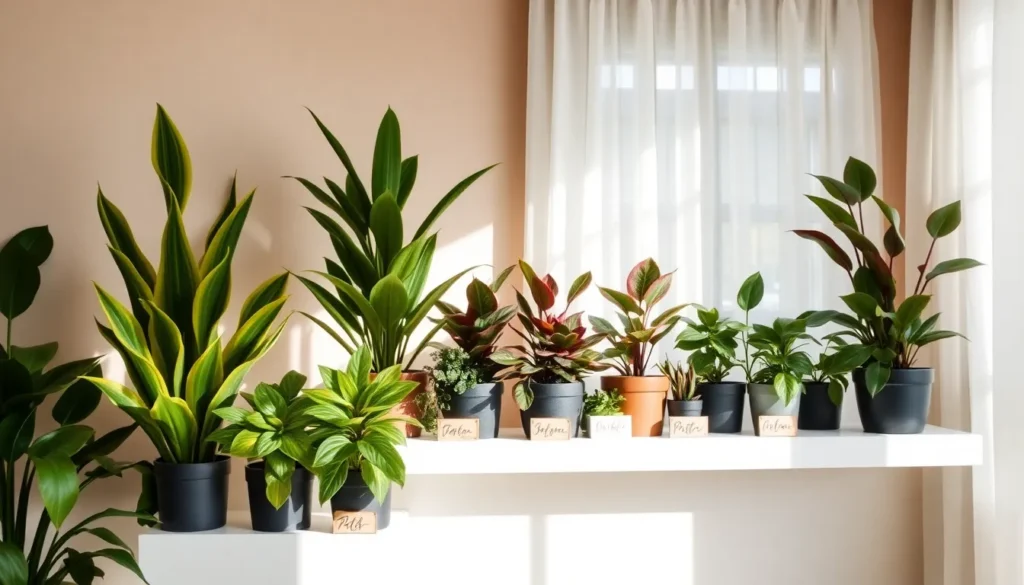Finding the perfect indoor plants that thrive in low-light conditions can feel like discovering hidden treasures in the plant world. Whether you’re a novice gardener just starting to explore the joys of indoor greenery or a seasoned plant enthusiast seeking to diversify your collection, this guide will illuminate your path to success.
Indoor gardening is a rewarding pursuit that not only beautifies your home but also purifies the air, creating a serene oasis in any space. While many assume that lush indoor plants demand abundant sunlight, there are numerous stunning varieties that flourish in minimal light, making them ideal for apartments or offices with limited sunlight exposure.
In the following exploration, you’ll uncover ten remarkable plants that defy the odds and bring vibrancy to shadowy corners. Each plant we introduce will be accompanied by practical tips to ensure not only their survival but their thriving presence in your home. As you delve into this guide, prepare to be inspired and empowered to cultivate your low-light indoor garden with confidence and joy.
Introduction to Low-Light Plants
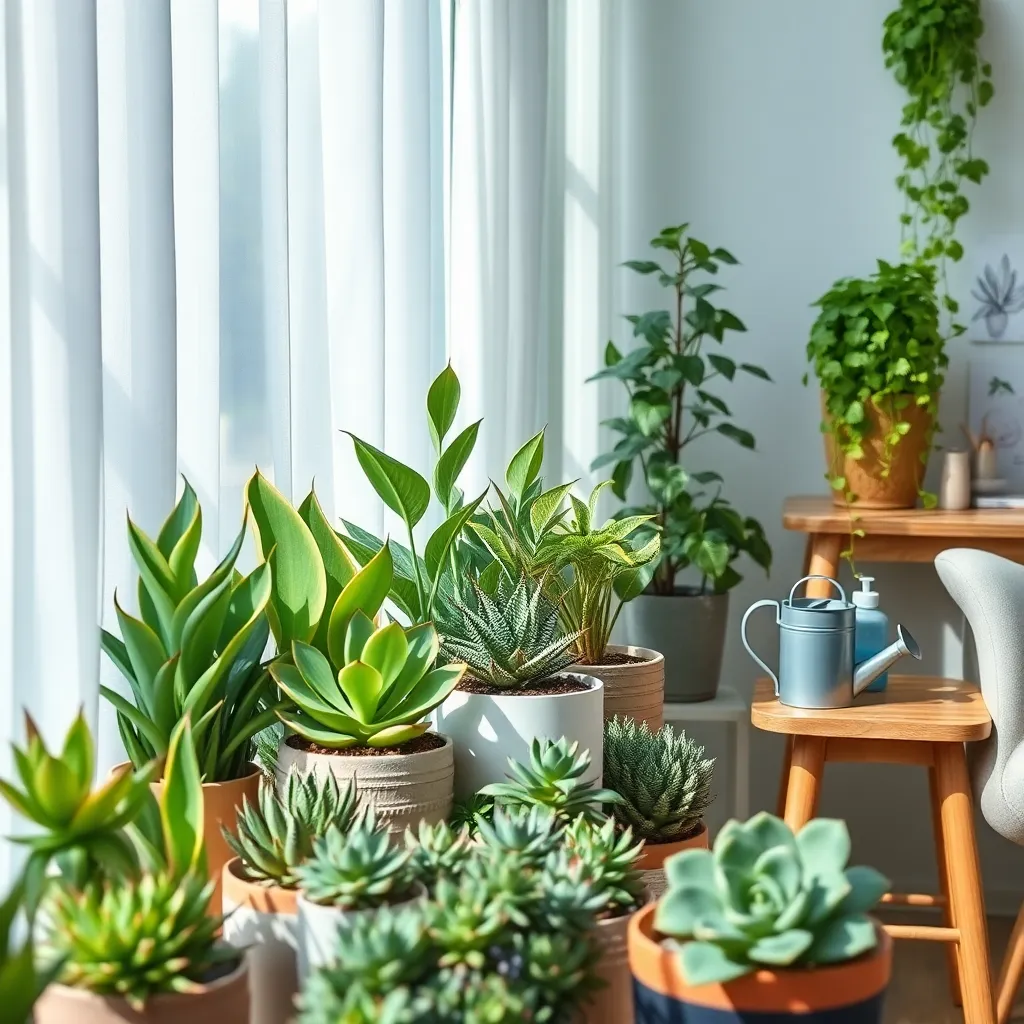
When you’re short on sunlight but eager to bring nature indoors, low-light plants are your best allies. These plants thrive in dimly lit corners of your home, offering lush greenery and vibrant life with minimal sunlight exposure.
To succeed with low-light plants, it’s crucial to understand their specific needs. Most of these plants prefer indirect sunlight and can even tolerate fluorescent lighting, making them ideal for offices and north-facing rooms.
Watering is another key aspect of low-light plant care. These plants often require less water than their sun-loving counterparts, so it’s best to let the top inch of soil dry out before watering again.
For optimal growth, choose the right soil and potting mix. A well-draining potting mix, often with added perlite or peat moss, helps prevent root rot, which is a common issue in low-light conditions.
- Check the soil moisture weekly to avoid overwatering.
- Rotate the plants occasionally to ensure even growth and prevent leaning.
- Consider occasional feeding with a balanced, water-soluble fertilizer during the growing season to encourage healthy foliage.
Benefits of Indoor Shade Plants
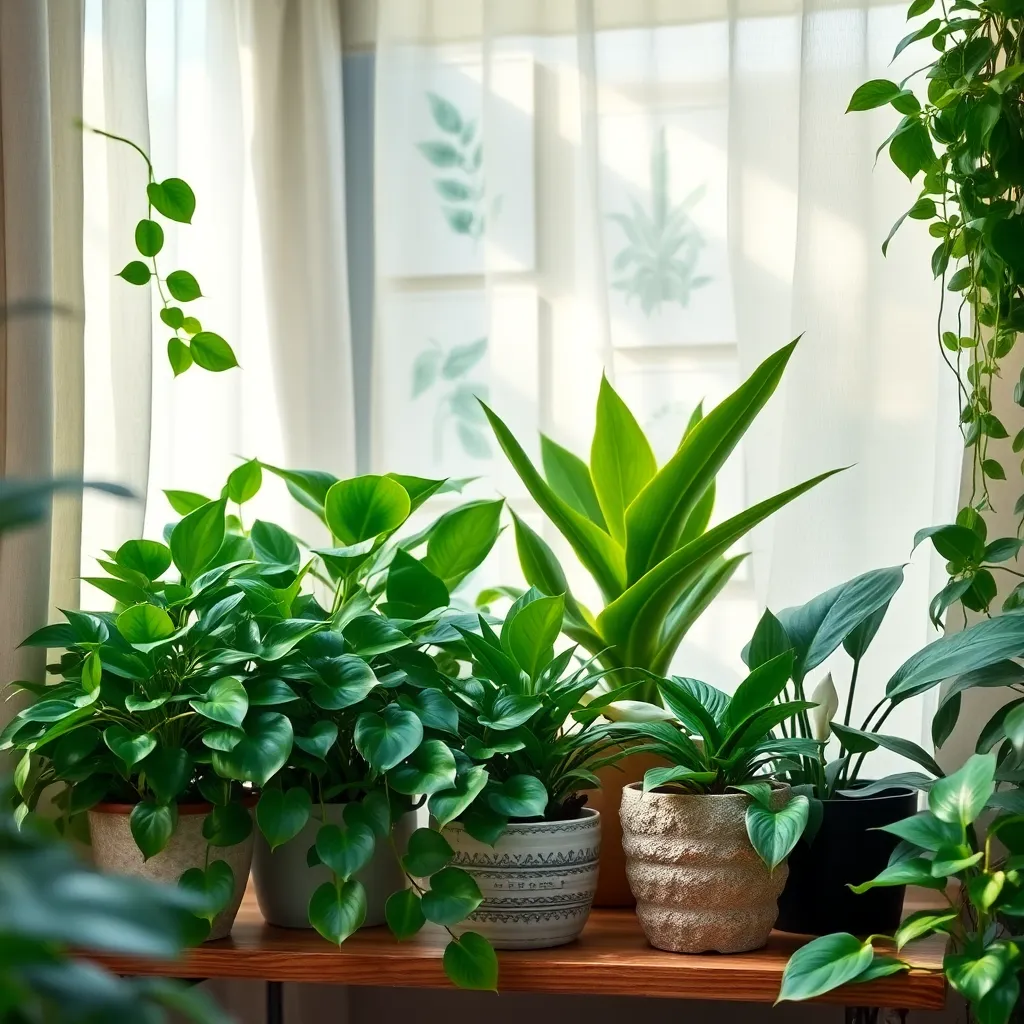
Indoor shade plants offer a plethora of benefits, making them a great choice for any home. These plants thrive in low-light conditions, allowing you to brighten up spaces that may not receive direct sunlight.
One of the primary advantages of indoor shade plants is their ability to purify the air. They can help remove toxins like formaldehyde and benzene, contributing to a healthier indoor environment.
Moreover, indoor shade plants are typically low-maintenance, requiring less frequent watering than their sun-loving counterparts. For optimal growth, water these plants when the top inch of soil feels dry, and use a well-draining potting mix to prevent root rot.
For beginners, plants like the Snake Plant or the ZZ Plant are excellent choices due to their resilience and adaptability. Ensure they are placed in a spot with indirect light and avoid over-watering by checking soil moisture regularly.
More experienced gardeners can enjoy experimenting with different varieties of ferns, which thrive in humid, low-light conditions. To increase humidity, consider placing a tray filled with water and pebbles under the plant’s pot or regularly mist the foliage.
Choosing the Right Low-Light Species
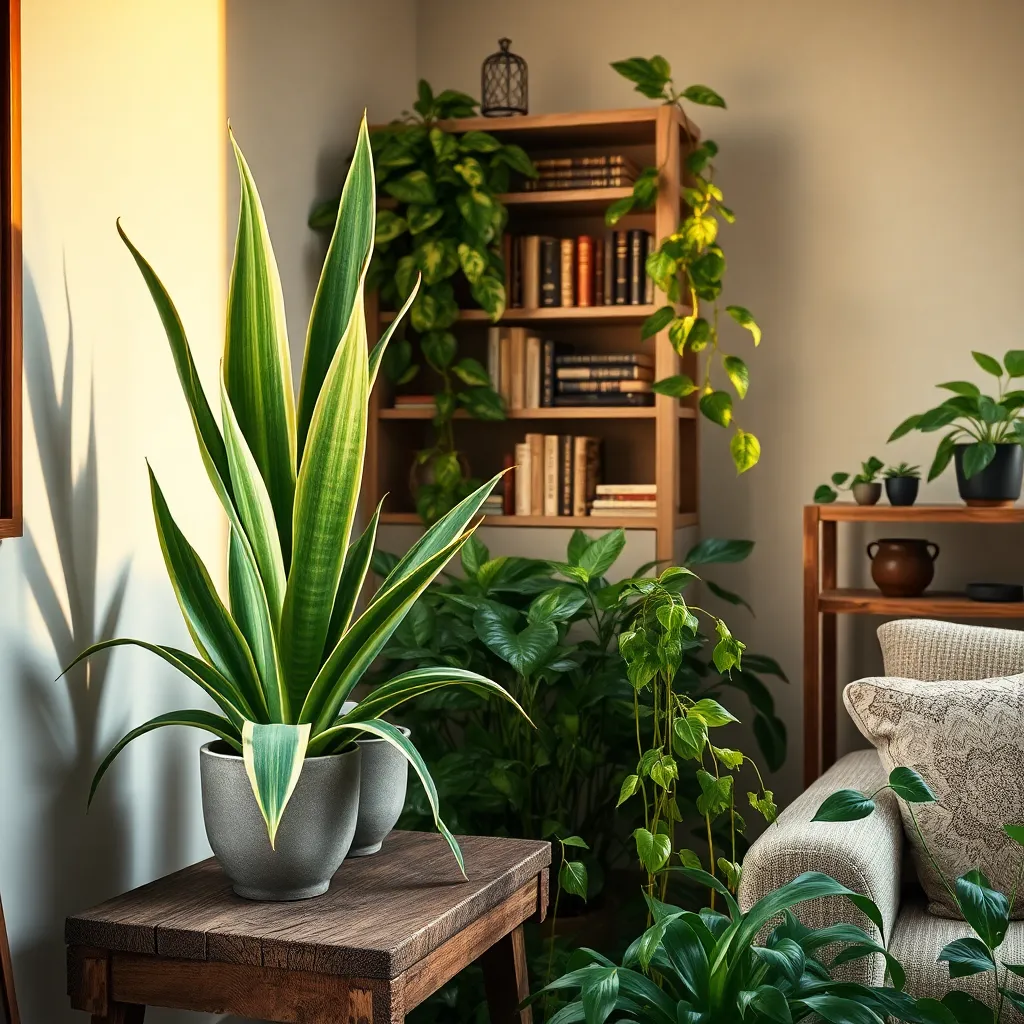
Choosing the right low-light species is essential for any indoor garden, especially if your space lacks abundant natural light. Start by considering plants like the ZZ Plant (Zamioculcas zamiifolia) and Snake Plant (Sansevieria), which thrive in low-light conditions and require minimal maintenance.
When selecting plants, pay attention to their natural habitat and adaptability. Peace Lilies, for example, are perfect for low-light areas as they naturally grow under the canopy of tropical forests, making them accustomed to indirect light.
For those who want a touch of color, the Chinese Evergreen (Aglaonema) offers beautiful variegated leaves and can tolerate low light. Ensure you water it sparingly, allowing the soil to dry out between waterings to prevent root rot.
Growing these plants successfully involves not just selecting the right species, but also understanding their specific needs. Use a well-draining potting mix to prevent overwatering, which is a common issue for low-light plants.
Advanced gardeners can experiment with adjusting humidity levels to mimic the plant’s natural environment. Consider using a pebble tray with water beneath the pot or a small humidifier to increase humidity, benefiting plants like the Peace Lily and Chinese Evergreen.
Peace Lily: A Hardy Choice
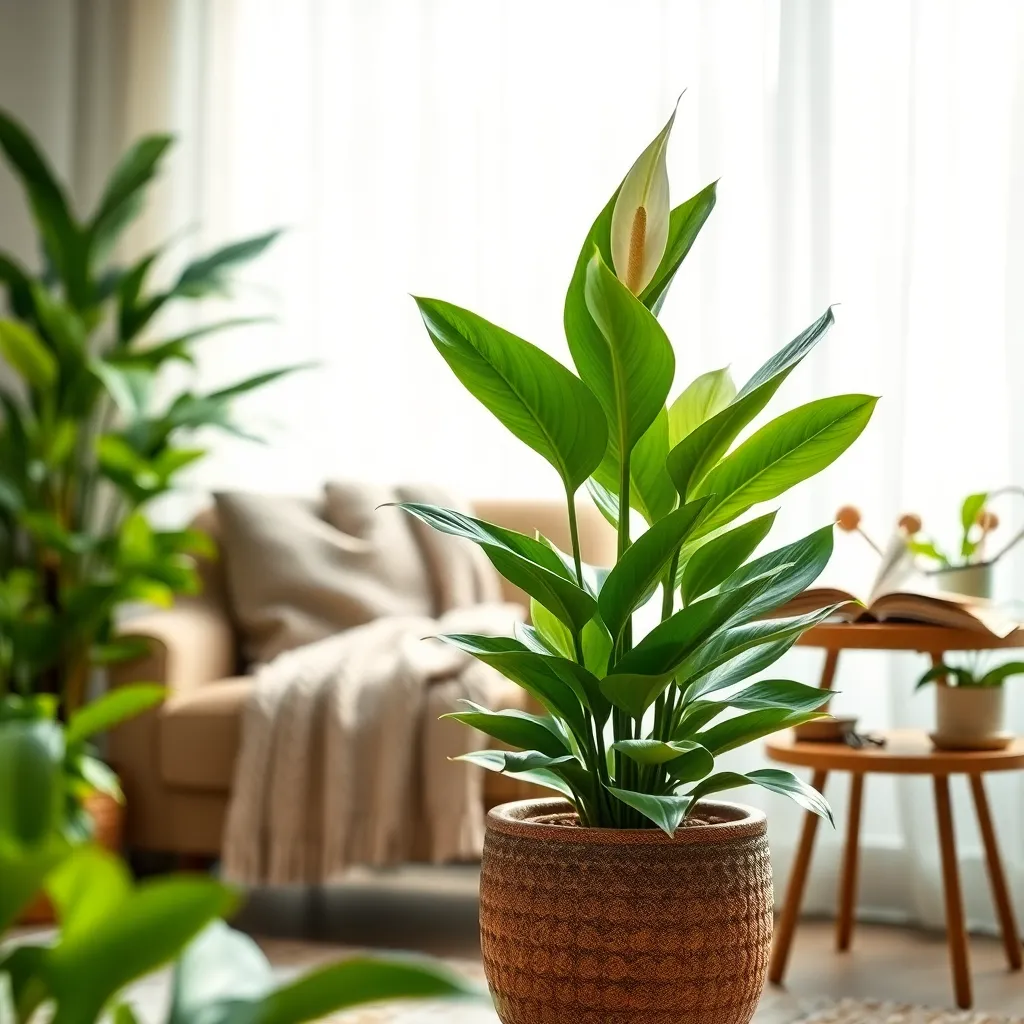
The Peace Lily is a beloved choice for those seeking a hardy indoor plant, particularly in low-light environments. Known for its lush, dark green leaves and elegant white blooms, it can thrive with minimal sunlight, making it ideal for offices or apartments.
For optimal growth, place your Peace Lily in indirect light, avoiding direct sunlight which can scorch its leaves. It prefers humidity, so misting the foliage regularly or placing it near a humidifier can keep it thriving.
Watering is crucial; allow the top inch of soil to dry out between waterings to prevent root rot. Using a well-draining potting mix, such as one containing peat moss or perlite, will ensure the roots remain healthy.
Fertilize your Peace Lily every six to eight weeks during the growing season with a balanced, water-soluble fertilizer. For advanced care, consider cleaning the leaves occasionally with a damp cloth to remove dust and promote optimal photosynthesis.
Snake Plant: The Indestructible Green
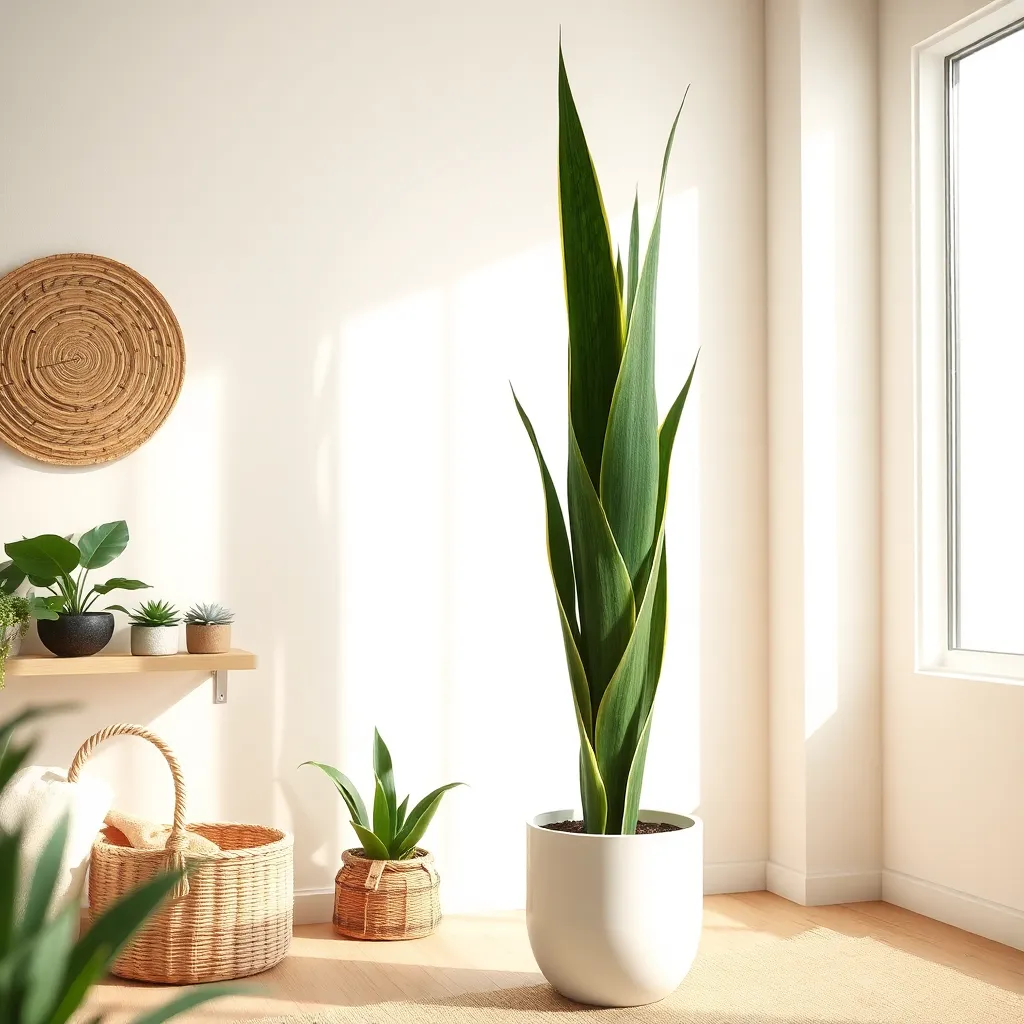
Snake plants, often dubbed the “Indestructible Green,” are perfect for those with a busy lifestyle or less-than-ideal lighting conditions. Known for their resilience, they thrive in low-light environments and can tolerate a bit of neglect, making them ideal for beginners.
For optimal growth, place your snake plant in a well-draining potting mix, ideally a cactus or succulent-specific blend. This ensures that the plant doesn’t sit in water, which could lead to root rot; remember, overwatering is one of the few ways to harm this hardy plant.
While snake plants can survive with infrequent watering, aim to water them every two to three weeks, allowing the soil to dry out completely between waterings. In winter months, reduce watering frequency, as the plant’s growth slows, and it requires even less moisture.
Apart from their minimal care requirements, snake plants offer the added benefit of purifying the air. They absorb toxins such as formaldehyde and benzene, which can improve indoor air quality, making them not just durable but health-enhancing additions to any home.
ZZ Plant: Minimal Care Required

The ZZ Plant, known for its resilience, is an ideal choice for those seeking minimal care indoor greenery. Its robust nature makes it perfect for beginners who may not have a green thumb yet.
One of the standout features of the ZZ Plant is its ability to thrive in low-light conditions. This makes it a perfect addition to dimly lit rooms or offices, where other plants might struggle.
When it comes to watering, the ZZ Plant is quite forgiving. Water it thoroughly, allowing the soil to dry out completely between waterings to prevent root rot, typically once every two weeks.
For optimal growth, plant the ZZ in a well-draining potting mix, such as a blend of cactus soil and perlite. This ensures that excess moisture doesn’t linger, which is crucial for its health.
Advanced care tip: Every couple of months, dust its glossy leaves with a damp cloth to help it photosynthesize efficiently. This small effort will keep your ZZ Plant looking vibrant and healthy.
Pothos: The Trailing Beauty
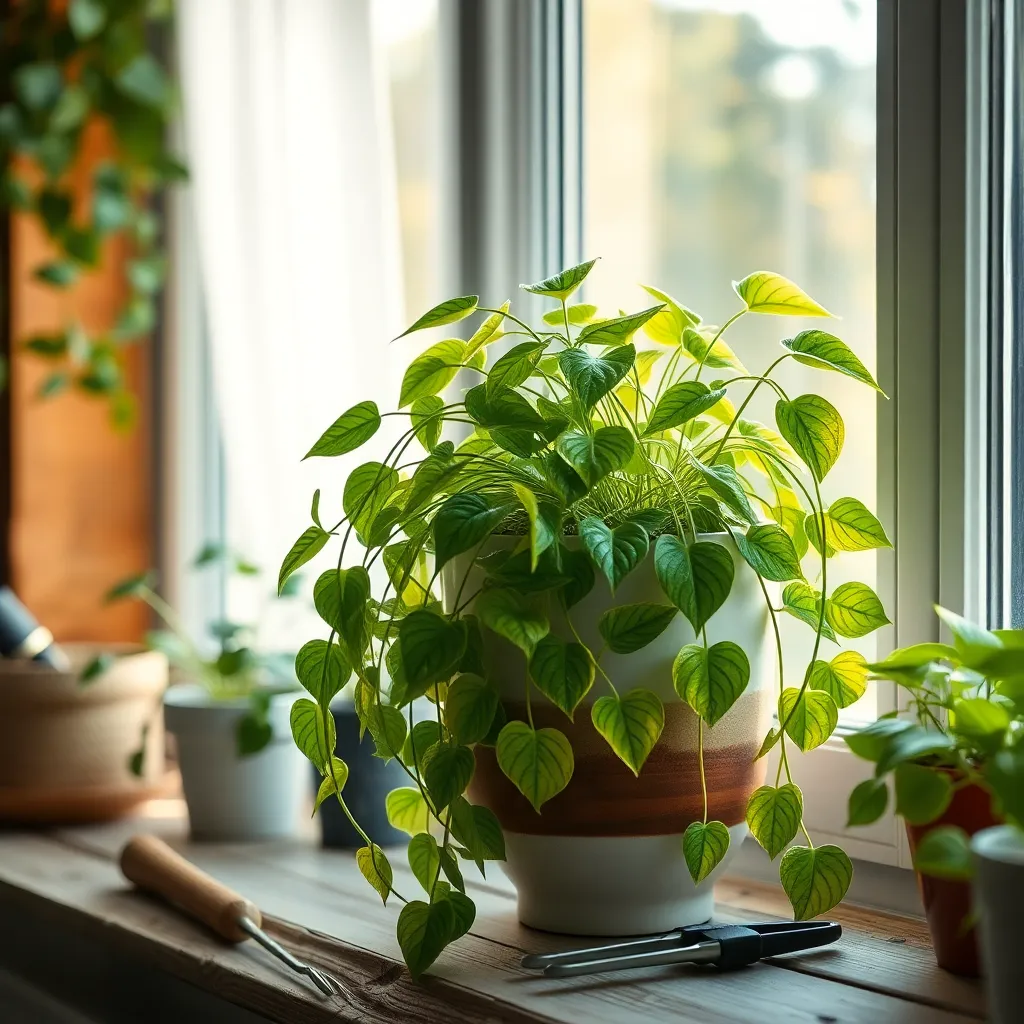
Known for its lush, trailing vines, the Pothos is an ideal choice for spaces with limited sunlight. This resilient plant thrives in a variety of lighting conditions, from low light to bright, indirect light, making it versatile for almost any indoor setting.
To ensure the health of your Pothos, it is essential to use well-draining soil, such as a mix containing peat moss and perlite. Water your Pothos every 1-2 weeks, allowing the soil to dry out between waterings to prevent root rot.
For beginners, Pothos is forgiving and bounces back quickly from neglect, making it a perfect plant to start your indoor gardening journey. Advanced gardeners can experiment with propagating Pothos by cutting a vine below a node and rooting it in water or soil.
Regular pruning helps maintain the desired shape and encourages bushier growth for this trailing beauty. Fertilize your Pothos every 2-3 months during the growing season with a balanced houseplant fertilizer to support its vibrant foliage.
Cast Iron Plant: Tough and Resilient
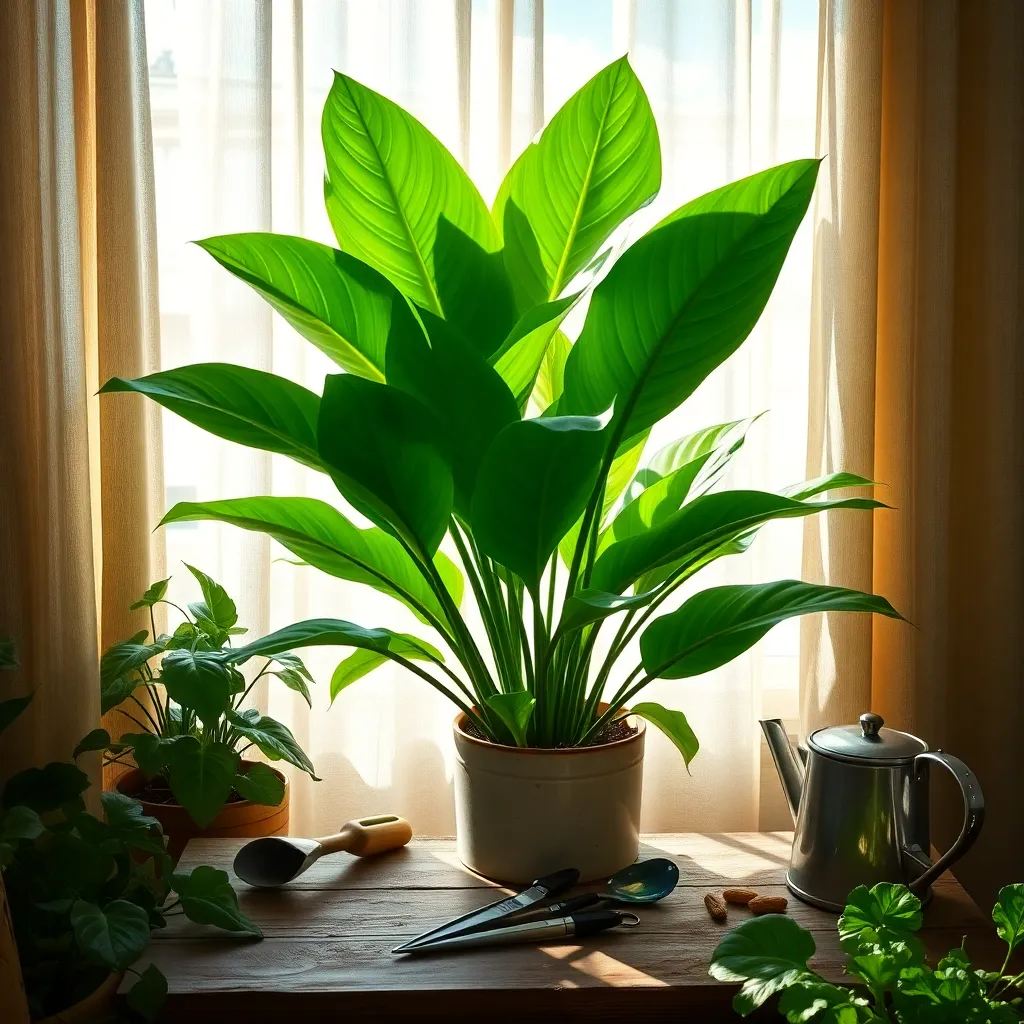
The Cast Iron Plant, known for its durability, is perfect for those who seek a low-maintenance indoor plant. It thrives in low-light conditions, making it ideal for rooms with little natural sunlight.
To care for your Cast Iron Plant, use a well-draining potting mix that retains some moisture without becoming waterlogged. Consider a mix of peat, perlite, and pine bark for optimal growth.
Watering should be done sparingly, allowing the top inch of soil to dry out between waterings. Overwatering can lead to root rot, so it’s crucial to ensure the pot has drainage holes.
For those looking to boost their plant’s health, feeding with a balanced liquid fertilizer every two to three months during the growing season can be beneficial. Regularly wiping the leaves with a damp cloth helps keep them dust-free and allows them to absorb more light.
Chinese Evergreen: Vibrant and Versatile
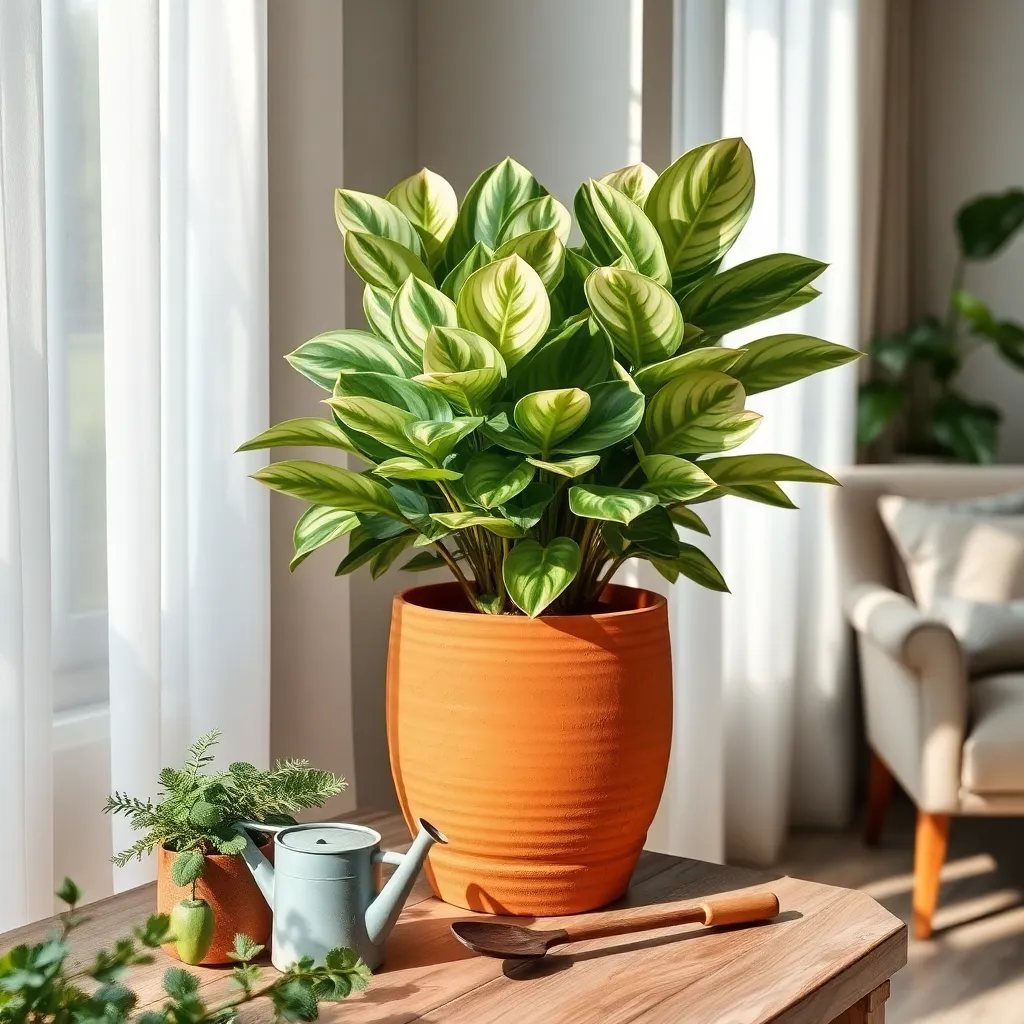
The Chinese Evergreen is a stunning plant known for its vibrant foliage and adaptability to low-light environments. It thrives in indirect sunlight, making it ideal for dimly lit rooms such as offices or north-facing spaces.
When caring for a Chinese Evergreen, ensure the soil is well-draining; a peat-based potting mix is recommended. Water the plant moderately, allowing the top inch of soil to dry out completely between waterings to prevent root rot.
For beginners, this plant is forgiving and requires minimal attention, while experienced gardeners will appreciate its air-purifying qualities. Regularly wipe the leaves with a damp cloth to keep them dust-free and encourage photosynthesis.
Advanced gardeners can experiment with propagation by division during repotting. Ensure each division has a healthy root system and several leaves for successful growth.
Care Tips for Low-Light Plants

Low-light indoor plants are perfect for spaces that receive limited natural sunlight. To keep them thriving, it’s important to understand their unique needs and adjust your care routine accordingly.
Watering is a key aspect of caring for low-light plants. These plants often require less frequent watering than their sun-loving counterparts, so it’s best to let the top inch of soil dry out between waterings to prevent root rot.
When it comes to soil, opt for a well-draining potting mix. A blend containing peat moss, perlite, and a bit of sand ensures adequate drainage while retaining necessary moisture.
Fertilizing low-light plants can enhance their growth, even with minimal sunlight. Use a balanced, water-soluble fertilizer at half strength every two months to provide essential nutrients without overwhelming the plant.
For those looking to elevate their plant care, consider rotating the plant every couple of weeks. This practice ensures even growth and prevents the plant from leaning towards a light source.
Humidity can also play a significant role in the health of low-light plants. Increase ambient moisture by placing a small humidifier nearby or by grouping plants together to create a microclimate.
By providing the right conditions and care, your low-light plants can become a vibrant part of your indoor space. With these practical tips, you can enjoy lush foliage even in the shadiest corners of your home.
Conclusion: Growing Success with These Plants
In exploring the vibrant world of indoor plants that thrive with minimal sunlight, we’ve uncovered ten green gems that can also nurture the relationships in your life. From the resilient Snake Plant to the calming Peace Lily, these plants symbolize important relationship concepts: resilience, adaptability, tranquility, growth, patience, nurturing, harmony, charm, positivity, and companionship. Each plant not only beautifies your space but also serves as a gentle reminder of the qualities that enrich our connections with others.
As a next step, why not enhance your home and heart by choosing one of these plants to symbolize your commitment to cultivating healthy relationships? Place it in a spot where you’ll see it daily, encouraging you to embody these nurturing qualities.
Be sure to bookmark this article, so you can revisit these insights and refresh your inspiration whenever needed. Remember, just as these plants flourish with a little attention and care, so too will your relationships grow when nurtured with intention and love.
Looking ahead, with these lessons in mind, you’re well-equipped to foster lasting, fulfilling connections. Here’s to a future filled with thriving relationships that echo the beauty and resilience of these remarkable plants.

